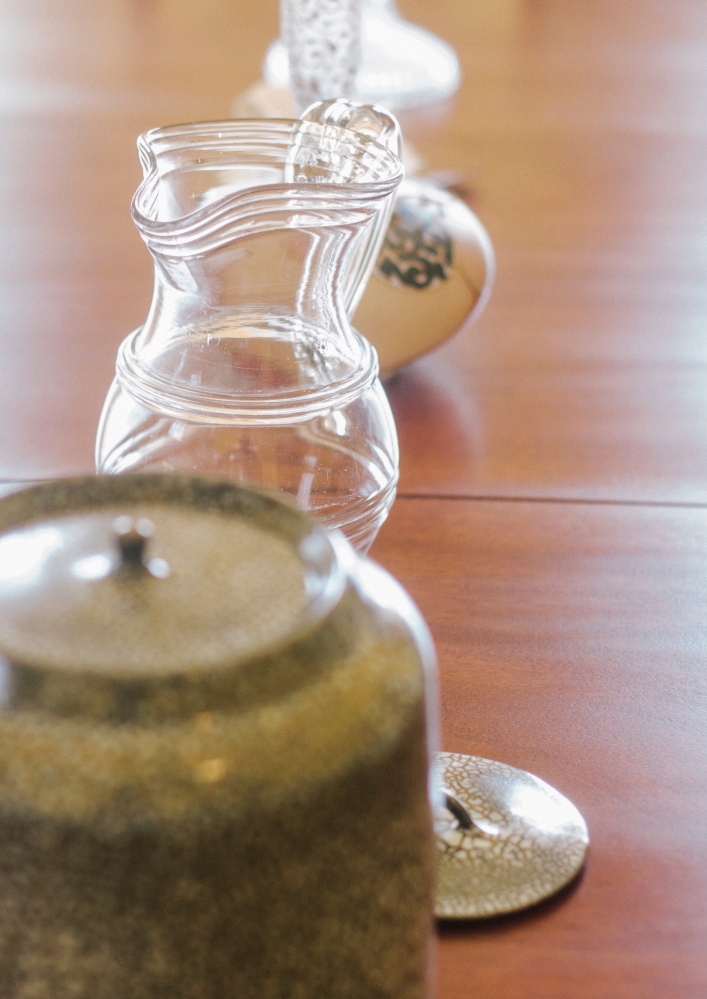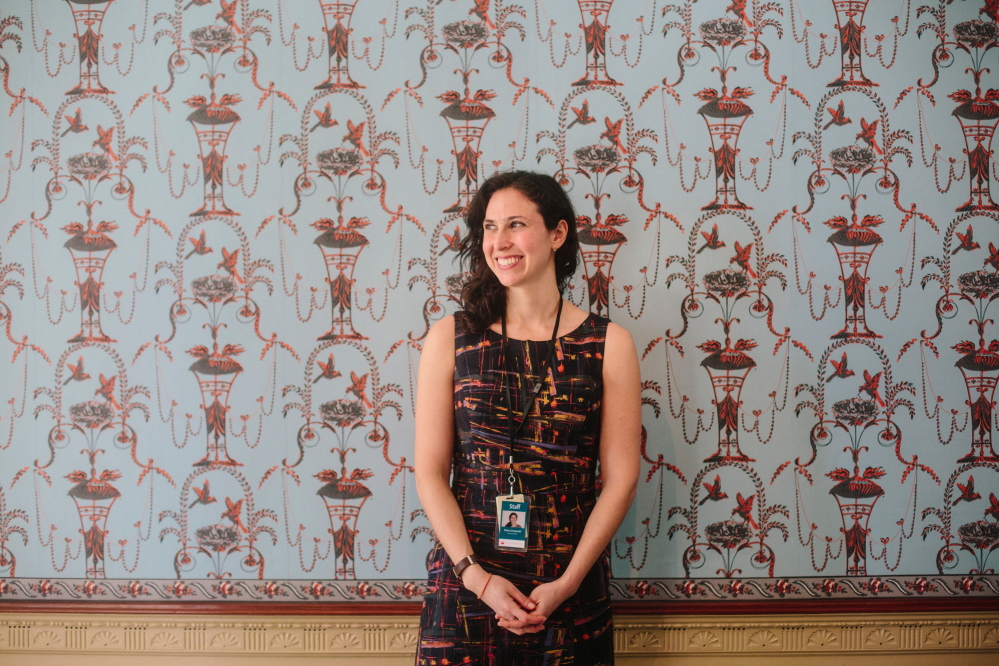One of the Portland Museum of Art’s newest hires will play an integral role in the museum’s ambitious effort to re-install the art in its galleries. Diana Greenwold, who grew up attending the Smithsonian Institution in Washington, D.C., and taught a Western art survey course to prisoners at San Quentin, is evaluating the museum’s expansive collection of decorative arts – glassware, silverware, furniture and other items associated with the home.
Or, as she puts it, “All the stuff in your grandmother’s attic.”
The museum hired her in December as a curatorial fellow. Her job involves researching the collection, planning installations and developing materials for print and online to help visitors understand what they are looking at and why it’s significant. Her work is part of a two-year, museum-wide effort to reconsider all the gallery spaces.
Greenwold will be responsible for incorporating the decorative art objects into displays across the museum, instead of segregating them in galleries where people seldom visit. Evidence of her efforts is visible at the museum’s cafe level, where the glass collection has been removed so Greenwold can study it and plan how to present it in a more compelling manner.
“The reinstallation offers an amazing opportunity to look at this collection across the board,” she said. “A lot of objects are going to see the light of day that haven’t in a long time.”
Greenwold, 32, is the first decorative arts specialist on the museum staff since 1994.
Museum director Mark Bessire said her hiring represents a more holistic approach to how the museum mounts exhibitions. “We want the galleries to be more mixed media,” Bessire said. “We’re trying to break down the barriers between different media. We’re interested in the ideas that are generated by bringing decorative arts, furniture, paintings and sculpture together.” He called those barriers “false walls.”
Decorative and fine arts come from common cultural sensibilities, and express the ideas and vision of their creators in similar ways, he said. The integration of decorative and fine arts is a museum trend, he added.
The museum had hoped to reinstall the galleries next winter, and planned to close for up to a month beginning January 2016. That end-date for the project has been pushed back by a year. The museum will close for two weeks next January for a building-wide update, including sanding the floors and painting the walls in the 30-year-old Payson Wing.
It will close again in January 2017 so the curatorial staff can reinstall the art.
“We were trying to accomplish too much in too short a period of time,” Bessire said. “We decided it made more sense to spread it out over two years.”
As part of the project, the museum is digitizing its collection to provide online access, and will publish a catalog that focuses on the collection. Greenwold will contribute to both efforts.
The museum has about 18,000 objects in its collection, including 6,000 decorative art items. At any time, the museum displayed fewer than 350 of them, and the vast majority were “below grade” in the basement cafe where they were easy to ignore, Greenwold said. “The museum is realizing that some of its treasures are in the decorative arts department, and those objects deserve to be out and displayed more prominently,” she said.
Greenwold attributes her love of the arts to her parents, who took her to the Smithsonian museums regularly. “We went all the time. I was there nearly every weekend from an early age, and I was fascinated with the objects and the stories told by those objects,” she said.
She was particularly smitten by James McNeil Whistler’s Peacock Room in the Smithsonian’s Freer Gallery of Art. The room represents Whistler’s masterpiece of interior design and decoration.
Before coming to Portland, Greenwold worked at the Metropolitan Museum of Art in New York, the de Young Museum in San Francisco and the Smithsonian. Among the most interesting parts of her past is her work as a volunteer at San Quentin State Prison in California, where she taught art history to inmates through the Prison University Project. “It was very different and also very interesting,” she said. “The students were motivated, curious and opinionated.”
She has a bachelor’s degree in art history from Yale University and a master’s degree in art history from the University of California, Berkeley, where she also is a candidate for her doctoral degree.
She and her fiance rent an apartment on Munjoy Hill.
Send questions/comments to the editors.





Success. Please wait for the page to reload. If the page does not reload within 5 seconds, please refresh the page.
Enter your email and password to access comments.
Hi, to comment on stories you must . This profile is in addition to your subscription and website login.
Already have a commenting profile? .
Invalid username/password.
Please check your email to confirm and complete your registration.
Only subscribers are eligible to post comments. Please subscribe or login first for digital access. Here’s why.
Use the form below to reset your password. When you've submitted your account email, we will send an email with a reset code.